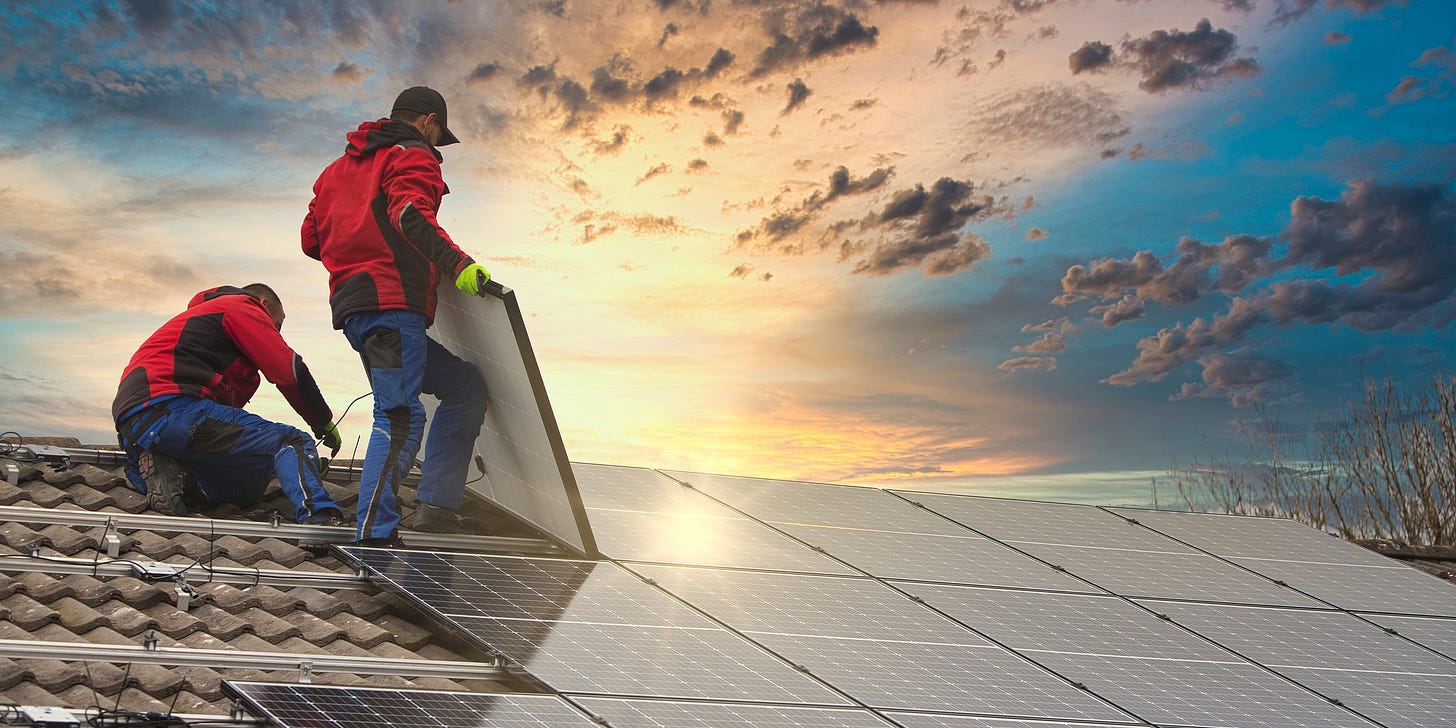Solar keeps the lights on in Jamaica
Clean energy holds strong in storms, climate disasters displace millions, and make your next move safer
When I posted about Hurricane Melissa on social media, I received over a thousand comments claiming it was “climate manipulation,” “weather control,” “just a natural cycle,” or the generic “the climate scam is just a money grab”…. but how can science debunk these claims?
Introducing Cold Facts, Hot Takes, my new series of evidence-based comebacks to common troll posts. I’ve already assembled a folder with tens of thousands of them, so this is can be a long series!
To watch the whole video, upgrade to a paid subscription on Substack or Patreon. You’ll be keeping this work alive, helping me and my small team continue to share the science, stories, and solutions that matter most.
Thank you!
Climate change is supercharging hurricanes and making natural disasters worse. But sources of renewable energy like rooftop solar can increase our resilience to natural disasters while also being a great way to cut emissions.
Recently, Jamaica was badly battered by Hurricane Melissa, the strongest to ever hit the country. Most power plants in Jamaica are fueled by imported oil and gas, making electricity very expensive. Rooftop solar has been gaining popularity due to high costs, and after the hurricane, it helped keep the lights on for many residents.
In Puerto Rico, it took a grueling six months to restore 90% of the power that had been knocked out by Hurricane Maria in 2017. Today, Oak Ridge National Lab is pioneering “a combination of experimental microgrids, solar panels, and storage” in Puerto Rico that has already proven to keep the power on when storms knock out the conventional grid.
Rebuilding power transmission lines after a storm takes months, but “with solar, you maintain some ability to continue generating electricity,” David Gumbs, an energy expert from the Rocky Mountain Institute, explains. “And in the Caribbean, when the hurricane passes, if I have rooftop solar and batteries and if I can keep my refrigerator running, my entire neighborhood benefits.”
Over the past decade, climate-related disasters have displaced 250 million people, according to a new report by UNHCR. That’s 70,000 people every day, or 2 people being displaced every 3 seconds! And the events that lead to this displacement are growing in number as the world warms.
Refugees and displaced people are particularly exposed to climate risks. “Three in every four refugees and other displaced people fleeing war and persecution now live in countries that are highly vulnerable to climate-related hazards,” the report says. The hottest 15 refugee camps in the world — in Eritrea, Ethiopia, Gambia, Mali, and Senegal — may be uninhabitable by the middle of the century, thanks to a projected 200 or more days of extreme heat and high humidity.
“Around the world, extreme weather is putting people’s safety at greater risk. It is disrupting access to essential services, destroying homes and livelihoods, and forcing families – many who have already fled violence – to flee once more,” said Filippo Grandi, UN High Commissioner for Refugees. “These are people who have already endured immense loss, and now they face the same hardships and devastation again. They are among the hardest hit by severe droughts, deadly floods and record-breaking heatwaves, yet they have the fewest resources to recover.”
Are you looking for a new home? This guide produced by the New York Times earlier this year helps readers assess the climate vulnerabilities of a particular place. It also includes tips on how to find somewhere to live that can weather climate stresses. “For all too long, weather-driven risks have been shrouded or simply ignored. But there are more warning signals now, and we should heed them and educate ourselves about the relative risks,” the authors write.
Some questions to ask when looking for a home include:
Where can I learn more about a property’s long-term climate risks?
Where can I find flooding history?
Where does a property’s water come from?
What kind of homeowners insurance policy will I need?
How can I protect my home against fire danger?
While the article was written for a U.S. audience, many of the suggestions can be extrapolated globally. I wouldn’t include it if it didn’t, since people from 181 different countries subscribe to this newsletter! So whether you’re shopping for a new home or trying to build resilience to climate change into your current home, I recommend giving this guide a read.
Mon, Dec 1st at 6pmCT/7pm ET - Inside COP30: Science, solutions, and the Texas Tech perspective - free; virtual; more information to come








